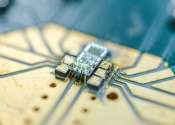Microbots can clean up polluted water
(Phys.org)—A new study shows that a swarm of hundreds of thousands of tiny microbots, each smaller than the width of a human hair, can be deployed into industrial wastewater to absorb and remove toxic heavy metals. The ...









